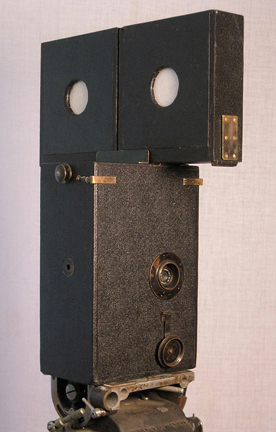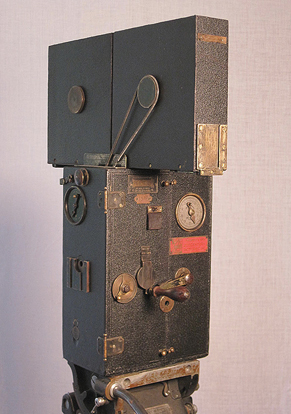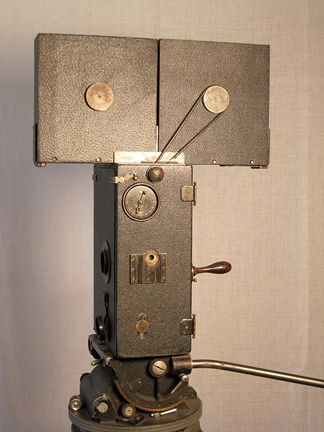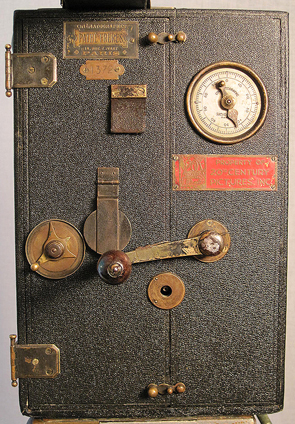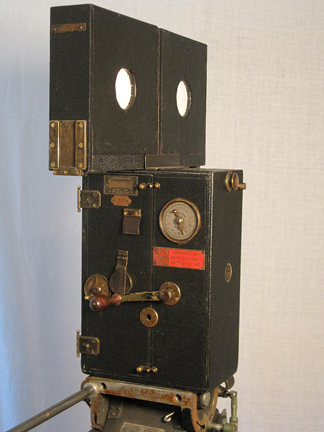Before going any farther into this room please look at the video of this Pathe on YouTube. Use the quotation marks along with the title in the search or you’ll get thousands of the wrong videos. “Best Pathe Ever” is what you want to search for.
This is the best running Pathe I have ever seen. It’s from the early days of the motion picture industry and lasted long enough to have had a great career in the industry.
There is no telling who had this camera before Twentieth Century Pictures but whoever they were, they took great care of the camera. It was maintained so well that nearly a hundred years after it was made it still is the best running Pathe I have ever seen.

This camera belonged to Twentieth Century Pictures before they merged with Fox Studios. I’m sure the camera went over to live at “Twentieth Century Fox” after the merger. It is extremely rare that any camera can be proven to be associated with any event or film, let alone a particular studio.
We know that camera #1021 was made before 1914. That probably makes this 20th Century Pictures’ Pathe camera #1372 manufacture date just before WWI or immediately after WWI. All France’s manufacturers shifted into making war materials during the war. I can imagine that Pathe made cameras for the military during the war but seeing as they were a machine shop at heart my guess is that they primarily made machinegun parts in the war years.
I have only seen two cameras owned by 20th Century Pictures, Inc. This one and the one Rupert Murdoch has in his collection. Rupert’s camera is in the hall, just outside his office door at 20th Century Fox pictures in Century City. It’s the last camera you see before entering his office.
This Pathe is set up as an action camera as it is mounted on an Akeley Gyro gear head. (Did you see the video?) This way the cameraman can pan and tilt and still crank the camera at the same time. The whir of the Akeley Gyro is a wonderful sound as the flywheels spin up when you pan and tilt.
In the years before WWI Pathe cameras worked on more movies than any other camera. They were the industry gold standard of motion picture cameras until the Bell & Howell 2709 took that coveted place from them later on. Billy Bitzer shot “Birth of a Nation” and “Intolerance” and every other movie he made for D.W. Griffith on a Pathe just like this one.
The Pathe' Brothers were some of the industry's first moguls, owning everything from the cameras to the studios and the theaters. They bought out the Lumiere brothers. The Lumieres were well known as the first manufacturers of a commercially successful motion picture camera. The Pathe movement and camera shape is the Lumiere Brothers design and stems from around 1895. At first Pathe shot with their own perforations so no one else could steal and exhibit their films. Piracy was a huge problem in the early days of film; come to think of it it's still a huge problem. In 1909 the industry made a standards and practice alliance and all agreed to work on the Bell and Howell 35mm perforations, a standard that is still used today. This camera will use today’s film.
It is very difficult to find a pristine Pathe' as they were heavily used and generally modified and updated. They are leather covered and the nearly one hundred year old leather is usually dry and damaged way beyond being salvageable. The leather on this camera was replaced with Moroccan Pig Skin, the same leather used at the factory. All the seams in the leather were exactly matched to the factory original seams. This camera spent its retirement in the California desert so the leather had dried beyond repair. The great news is that the mechanical parts were well preserved by the low humidity. There is no rust and no bronze disease. The camera has been lubricated well and cleaned well. It will shoot great footage today.
Now let’s look at the camera.

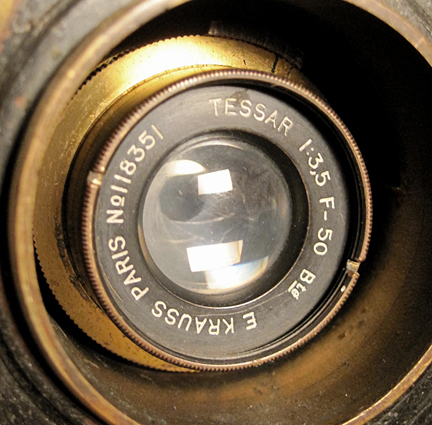
Lens: E Krauss Paris No118351 Tessar 1:3.5 F=50 Bte It seems that 118 type lenses were made before WWI under license from Carl Zeiss of Germany. This was done to avoid high import tariffs. When the war broke out all licensing was suspended. It seems that all 50mm Krauss Tessar 118 type cine lenses were from before WWI. This dates the lens manufacture from before July 1914. If this is the original lens then the camera should be from before July 1914 also.
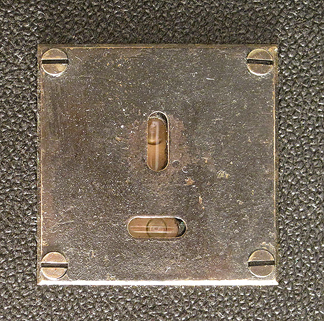
Happily, both glass tubes, with their bubbles, are intact in the spirit level. The spirit level is on the top of the camera next to the two square magazines.
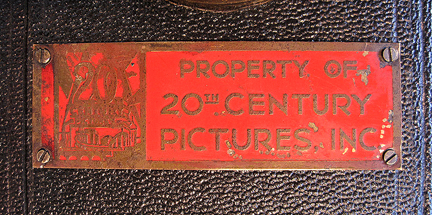
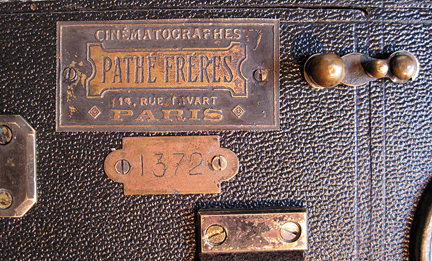
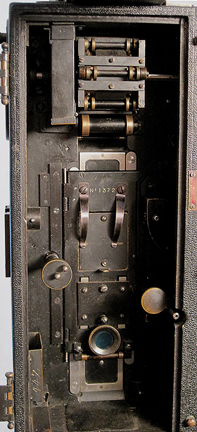
This is the Pathe Logo/tag and the serial number of the camera. The serial number, 1372, inside the camera on the movement matches. Quite often Pathes don’t have matching numbers.
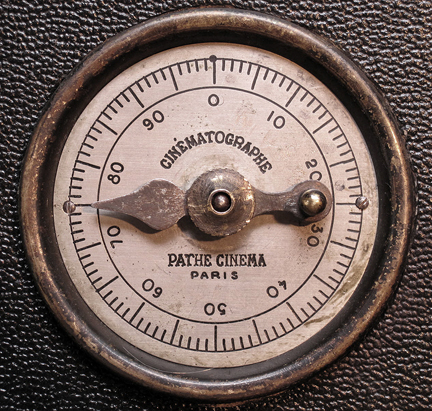
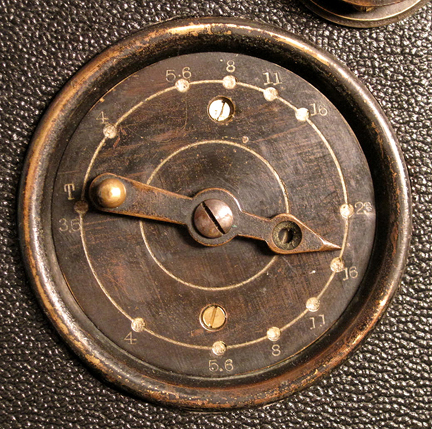
These two gages are on the outside of the camera. Both are working correctly and are truly beautiful. Remember, this camera is about three years short of being a hundred years old.
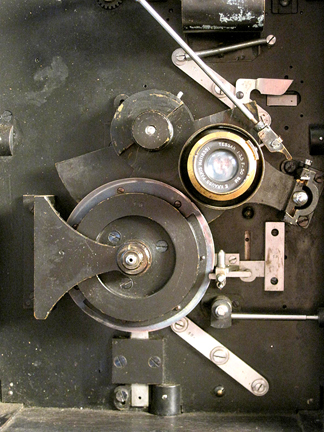
This is the movement. It is clean and well lubricated. It is nearly identical to the original Lumiere movement of 1895. This speaks so well of the original engineering designs by the Lumiere Brothers.
Let’s take a tour around the camera:
